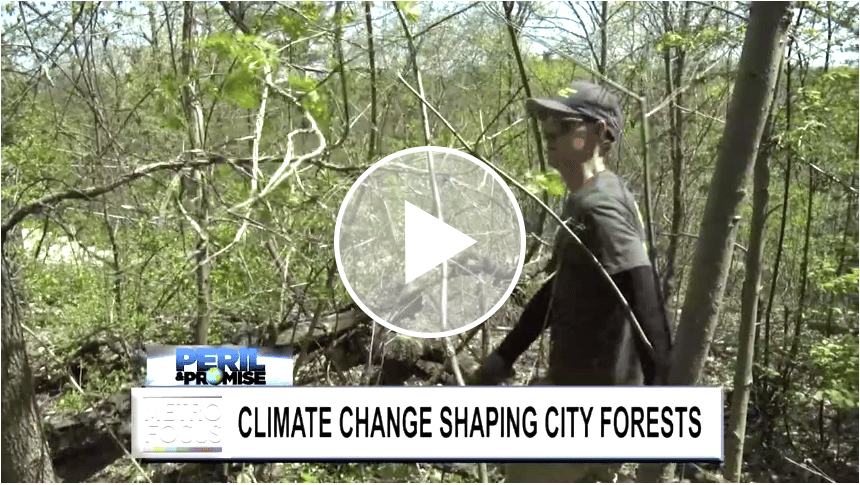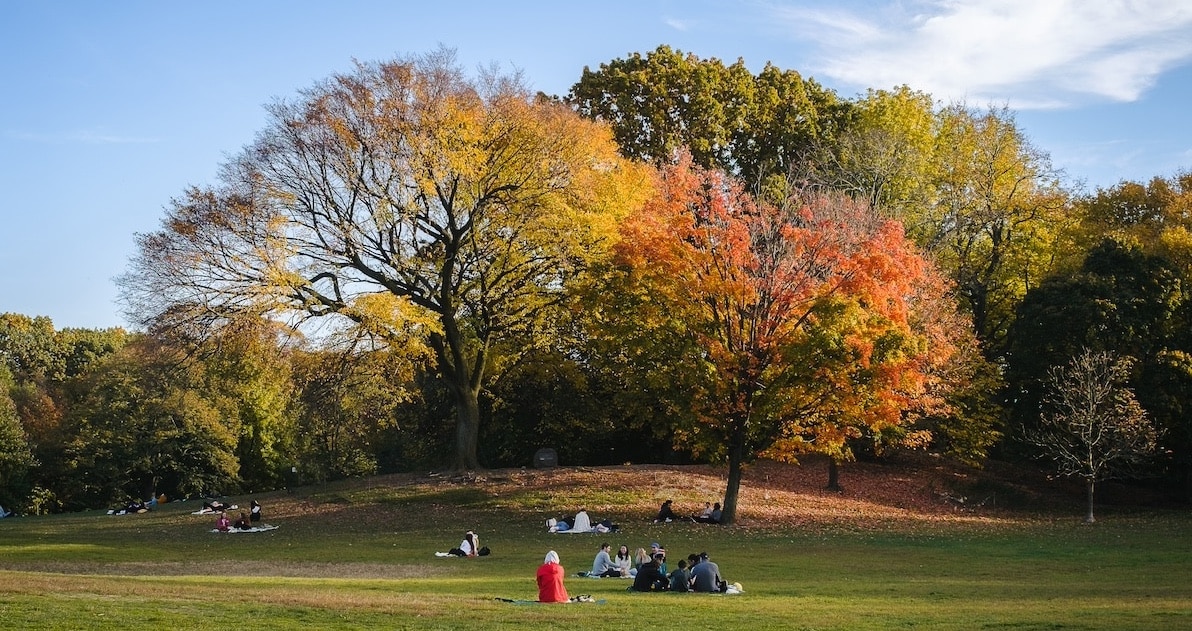Alliance Considers the Forest (and the Trees)
May 14, 2018
On a recent spring morning, Prospect Park Alliance kicked off a survey of trees in Prospect Park as part of its work in caring for the Park’s natural areas. This project is funded through a $75,000 Urban Forestry Grant from the New York State Department of Environmental Conservation (DEC).
As part of its mission to sustain, restore and advance Prospect Park, Prospect Park Alliance has been working to revitalize the Park’s natural areas over the past two decades, a more than 20-year, $15 million investment that has encompassed the planting of more than 500,000 trees, plants and shrubs. Alliance staff include trained arborists, horticulturalists, a forest ecologist and a Natural Resources Crew. The results of this investment can be seen in the transformation of these once-derelict areas into some of the Park’s most scenic destinations.
Over the past two years, through $1.2 million in grants from the National Parks Service through the Hurricane Sandy Disaster Relief Assistance Grant Program for Historic Properties, administered by New York State Office of Parks, Recreation and Historic Preservation, the Alliance has been restoring the woodlands in two areas particularly devastated by Hurricane Sandy and other severe storms: the Vale of Cashmere in the northeast corner of the park, and Lookout Hill near the Nethermead and Peninsula (the Alliance lost 500 throughout the park due to Hurricane Sandy, with 50 alone in the Vale of Cashmere). This work was highlighted in a 2017 article in The New York Times, and brought to the park a crew of goats who helped clear the areas of invasive weeds in an environmentally friendly way. The work concludes this year with the planting of Lookout Hill.
The New York Times also highlighted the Alliance’s work to sustain the Park’s natural areas, announcing a partnership with the Natural Areas Conservancy to pilot a 25-year plan to enhance and protect New York City’s vital urban forests. The timing is ideal, since the Alliance is wrapping up its own 25-year plan to restore the woodlands, and these treasured natural areas are beset by new challenges, including climate change and the threat of invasive pests and diseases such as Emerald Ash Borer and Oak Wilt. This pilot program will enable the Alliance to share best practices with other parks citywide, and strengthen its expertise and knowledge base in woodlands restoration.
With respect to the tree survey, a team of arborists from Davey Resource Group, a well-respected urban forestry consultant that has worked extensively in New York City, is collecting data on an estimated 12,000 to 15,000 trees in the Park, representing about half of the total tree population. The inventory will catalog the various attributes of Prospect Park’s trees—species, size and location to name a few. The survey will also include invasive insect, pest and disease detection to help the Alliance in its care of the Park’s trees, “the lungs” of Brooklyn. The inventory will focus on trees in the Park’s landscaped areas. The results of the inventory will help the Alliance, in partnership with the City, strategically maintain and enhance these trees to benefit generations to come.
“By tracking the Park’s trees, the Alliance can better care for these important natural resources, which play a big role in Brooklyn’s quality of life,” said John Jordan, director of Landscape Management at Prospect Park Alliance. “Trees cleanse the air we breathe; reduce the amount of stormwater runoff that reaches the city’s overburdened sewer system; provide shade that helps conserve energy by cooling buildings and paved surfaces; and even help people feel calmer and more quickly heal from sickness.”
Love Prospect Park? Plant or adopt a tree to celebrate a special occasion or loved one.


